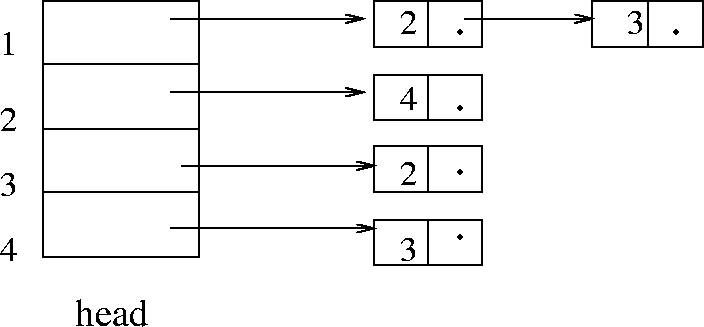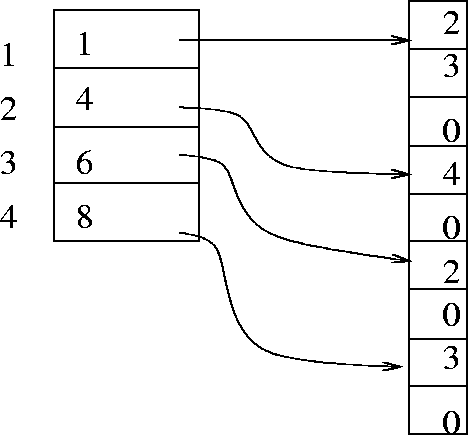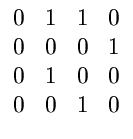


Next: 7.2 Shortest Paths Problem
Up: 7.1 Directed Graphs
Previous: 7.1 Directed Graphs
- 1.
- Adjacency Matrix: The matrix is of order
(n x n) where n is the
number of vertices. The adjacency matrix for the graph in Figure 7.2
is
- 2.
- Adjacency List: Figures 7.2 and 7.3
provide two different adjacency
list representations for the graph of Figure 7.1
Figure 7.2:
Adjacency list representation of the digraph
 |
Figure 7.3:
Adjacency list using cursors
 |
eEL,CSA_Dept,IISc,Bangalore

